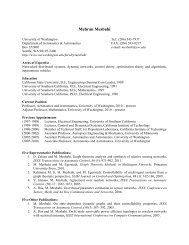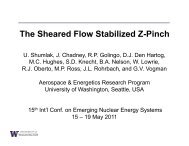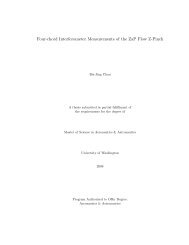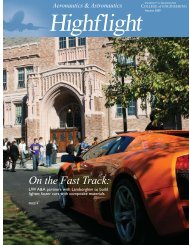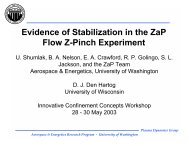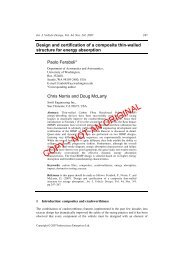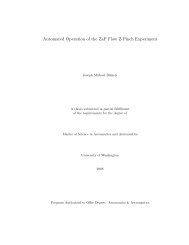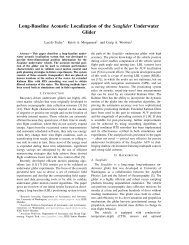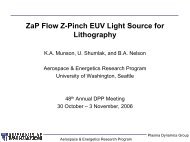Distributed Reactive Collision Avoidance - University of Washington
Distributed Reactive Collision Avoidance - University of Washington
Distributed Reactive Collision Avoidance - University of Washington
You also want an ePaper? Increase the reach of your titles
YUMPU automatically turns print PDFs into web optimized ePapers that Google loves.
20<br />
Chapter 4<br />
DRCA ALGORITHM<br />
The DRCA algorithm uses a two-step process: a deconfliction maneuver and a deconfliction<br />
maintenance phase. The guarantees <strong>of</strong> n-vehicle collision avoidance rest upon three<br />
results. The first is that a deconfliction maneuver will keep the vehicles from colliding so<br />
long as they are each separated by at least a given bound. The second is that this deconfliction<br />
maneuver will result in a conflict-free state for the vehicles. The final result is that<br />
once a group <strong>of</strong> vehicles is conflict-free, the deconfliction maintenance controller will keep<br />
them that way.<br />
These steps yield the flow chart for the DRCA algorithm that is shown in Fig. 4.1.<br />
When the vehicles are sufficiently separated, no avoidance is necessary, so the vehicles<br />
can simply use their desired control. The deconfliction maintenance phase also takes the<br />
desired control into account, though there is no guarantee that it is followed at all times.<br />
In general, vehicles will not all see each other at the same time and perform one synchronous<br />
maneuver. Rather, they must avoid each other as they come into sensing/communication<br />
range (this will be referred to as communication from here on since some communication<br />
is required even if sensing is used). This maneuver does not require all-to-all communication,<br />
but does require some assumptions about connectivity and separation in order for the<br />
full collision avoidance guarantees to hold. However, if these assumptions are relaxed, the<br />
DRCA algorithm will still function as a high-performance heuristic, albeit without the full<br />
safety guarantee.<br />
The first step <strong>of</strong> the DRCA algorithm is to decide when a vehicle needs to perform its<br />
deconfliction maneuver. Let D be the set <strong>of</strong> vehicles who are currently deconflicting (either<br />
performing the deconfliction maneuver or deconfliction maintenance). Define a binary



